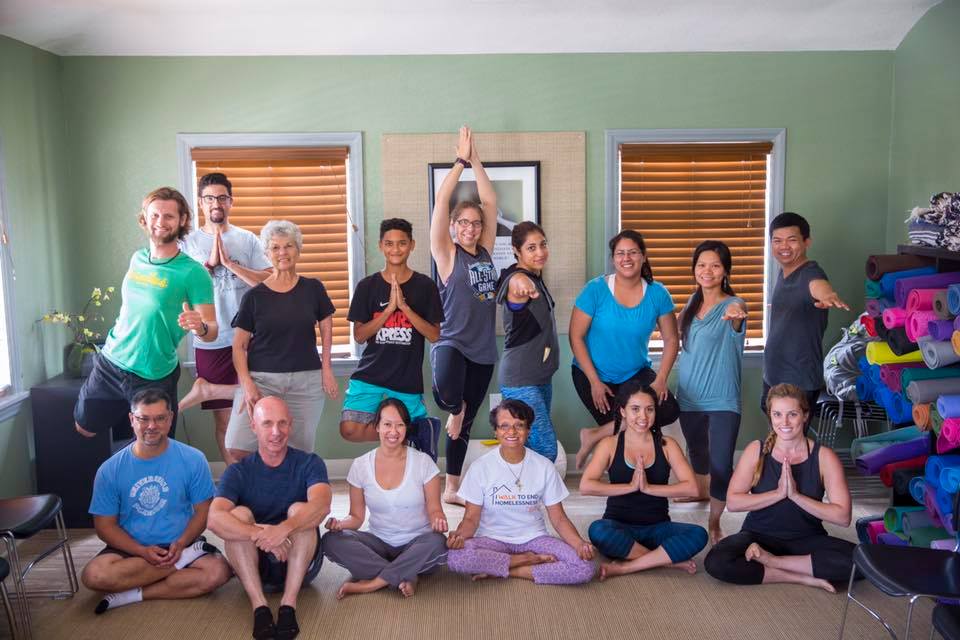I’m tired and sore as I sit in Catholic liturgies and retreats. I have become more and more aware of how my body and breath are overlooked.
I want a Church that takes the connection between the body, mind, and spirit more seriously. I envision a Church that recognizes the importance of the body in the spiritual life and is more open to popular practices that lead to calm and connection.
I continually meet thoughtful spiritual seekers who “grew up Catholic” but left. Their encounters with the Church felt out of touch with their personal experiences. This makes me disappointed.
While people increasingly flock to yoga studios – over 36 million people currently practice yoga in the United States – the Catholic Church is missing an opportunity to connect with an increasing population searching for spirituality elsewhere. This split need not happen.
***
Over the past six years of Jesuit formation, I have carved out a way of life rooted in Ignatian spirituality and yoga. These two traditions have inspired me to integrate my Catholic faith and vows of poverty, chastity, and obedience in holistic and authentic ways. While different, they both encourage awareness of the inner movements of the self and lay out a path towards transformation, healing, and freedom. Ignatian spirituality can help a yoga practitioner develop a personal relationship with God. Yoga can infuse Christian spirituality with techniques for the body and breath and present a comprehensive view of the human person.
A few months back, full of Ignatian zeal and yogic bliss, I called Frank Buckley, a fellow Jesuit and mentor of mine. I shared my interest in developing a workshop on Ignatian spirituality and yoga. Frank is a Jesuit priest, clinical psychologist, and yoga practitioner. He currently serves as the director of The Center, a homeless outreach located next to Blessed Sacrament Jesuit parish in Hollywood.
Frank realized awareness of the body is crucial for spirituality, healing, and flourishing. The body holds trauma, memories, and insights. They need to be tapped into for spiritual and psychological development. Frank’s vision, informed by modern science and Eastern spirituality, yet deeply rooted in his Catholic faith and priesthood, has been a healing force for the homeless, fellow Jesuits, and hipsters alike.
I shared with Frank my interest in developing a program of yoga and Ignatian spirituality. My vision was to offer an opportunity to relax the body and quiet the mind while reflecting on life and connecting with the presence of God. Frank signed on. After months of planning, we led a workshop at The Center for a diverse group of parishioners from Blessed Sacrament.
From their mats we led participants through yoga poses and meditation practices accompanied by the core movements of Ignatian spirituality: the Examen, the Principle and Foundation of the Spiritual Exercises, Ignatian contemplation, personal reflection, and spiritual conversation. The physical and breath techniques of yoga allowed these Ignatian practices to be experienced with the whole self, a welcome change from sitting in a chair or wooden pew.
As the retreat came to a close, each person shared reflections on the day. It was clear their participation provided some sense of relief and hope amidst life’s difficulties. The combination of Ignatian prayer and yoga calmed their body and eased their mind, allowing them to connect with the internal movements of their soul. The activities of the day intended to move the participants from thought and analysis to awareness of God’s love and their heart’s deepest desires.
If you’ve ever stepped foot in a Jesuit school, you’ve likely heard us talk about cura personalis, or care for the whole person. This “Jesuit speak” sounds great, but I suggest we can do more to implement this idea. The integrative and holistic system of yoga can serve as a significant resource towards this pillar of Jesuit education and spirituality.
Yoga has offered me a pathway towards caring for my whole self and moving into a deeper relationship with God. The postures of yoga open me up physically to God and allow me to practice moving through life with greater physical connection and bodily awareness. The breathing techniques of yoga allow me to sit and engage in prayer for longer durations with increased focus. Ultimately, the goal of yoga is to calm the mind in order to experience greater awareness and connection to God. From an Ignatian lens, this goal of yoga is best summed up in the famous words of Pedro Arrupe, SJ, “It is indeed a profound spiritual experience to know and feel myself so totally in God’s hands.” This is what I seek.
Religious and spiritual leaders need to find ways that reach people where they are and provide practices to engage the wholeness of the human person. An intentional combination of yoga and Ignatian spirituality is one such way to call forth a more intimate, relational connection to the self (body, mind, soul) and so too with God (Creator, Son, and Spirit).
***
The author will be leading an Ignatian yoga retreat in Detroit on October 22 and a breakout session at this year’s Ignatian Family Teach-In. Please get in touch with Bobby if you are interested.


